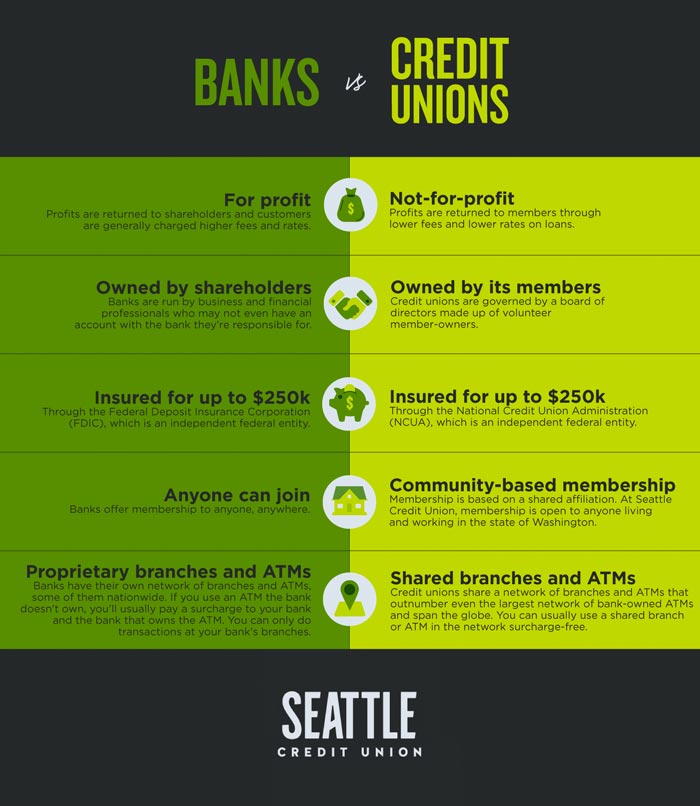The Ultimate Overview to Understanding Lending Institution

Credit rating unions stand as distinct monetary entities, rooted in principles of mutual support and member-driven procedures. As we navigate through the intricacies of credit report unions, an insightful journey awaits to lose light on these member-focused institutions and how they vary from typical banks.
What Are Credit History Unions?
Credit history unions are member-owned economic establishments that offer a variety of financial services to their participants. Unlike traditional financial institutions, credit unions run as not-for-profit organizations, indicating their main focus gets on serving their participants instead of making the most of revenues. Members of a cooperative credit union typically share a typical bond, such as benefiting the same employer, belonging to the exact same neighborhood, or becoming part of the same organization.
One of the essential benefits of credit history unions is that they commonly supply greater rate of interest on savings accounts and reduced rate of interest on finances compared to banks. Credit Union in Wyoming. This is due to the fact that lending institution are structured to profit their members directly, enabling them to hand down their revenues in the kind of better rates and fewer costs. In addition, cooperative credit union are recognized for their individualized client service, as they prioritize building partnerships with their members to recognize their one-of-a-kind financial needs and objectives
History and Development of Cooperative Credit Union
The roots of member-owned monetary cooperatives, known today as cooperative credit union, trace back to a time when areas looked for alternatives to conventional financial organizations. The principle of lending institution stem in the 19th century in Europe, with Friedrich Wilhelm Raiffeisen commonly attributed as the pioneer of the participating banking motion. Raiffeisen founded the initial identified lending institution in Germany in the mid-1800s, stressing community assistance and self-help principles.
The advancement of cooperative credit union continued in The United States and Canada, where Alphonse Desjardins established the very first cooperative credit union in Canada in 1900. Shortly after, in 1909, the first U.S. cooperative credit union was formed in New Hampshire by a team of Franco-American immigrants. These early lending institution operated the basic concepts of shared aid, democratic control, and member ownership.
With time, credit unions have grown in appeal worldwide as a result of their not-for-profit framework, emphasis on offering participants, and providing affordable monetary items and solutions. Today, lending institution play a crucial duty in the financial industry, giving easily accessible and community-oriented financial choices for companies and individuals alike.

Membership and Eligibility Criteria
Membership at a debt union is commonly restricted to individuals meeting details eligibility standards based upon the organization's starting principles and regulatory requirements. These requirements commonly include aspects such as geographical place, work status, membership in specific organizations, or affiliation with details groups. Lending institution are known for their community-oriented approach, which is reflected in their membership needs. Credit Unions in Wyoming. As an example, some cooperative credit union might just serve people who live or work in a certain location, while others may be customized to staff members of a certain business or members of a certain organization.
Furthermore, cooperative credit union are structured as not-for-profit organizations, implying that their key objective is to serve their members instead than produce revenues for investors. This focus on member service often translates into more personalized focus, reduced charges, and affordable interest prices on car loans and financial savings accounts. By satisfying the qualification criteria and coming to be a member of a cooperative credit union, people can access a series of financial items and services customized to their particular demands.
Solutions and Products Used
One of the key aspects that sets credit rating unions apart is the varied array of monetary services and products they offer to their members. Debt unions typically give traditional banking services such as financial savings and checking accounts, financings, and credit report cards.
Additionally, credit history unions commonly supply practical online and mobile financial alternatives for see here now participants to quickly handle their finances. They might provide advantages such as shared branching, permitting members to access their accounts at various other credit scores unions throughout the nation. Some credit history unions also supply insurance coverage items like home, life, and car insurance coverage to aid members protect their properties and liked ones.

Benefits of Financial With Cooperative Credit Union
When considering economic institutions, checking out the advantages of banking with credit rating unions exposes special advantages for participants seeking tailored solution and competitive rates. Unlike big financial institutions, credit score unions are member-owned and focus on building strong relationships with their participants. In general, banking with a credit rating union can supply an extra customized, economical, and member-centric economic experience.
Conclusion
In conclusion, credit unions stand out as member-owned economic organizations that prioritize offering their participants over optimizing revenues. With origins dating back to 19th century Europe, credit unions adhere to principles of mutual assistance and participant possession.
Credit score unions are member-owned economic institutions that offer an array of financial services to their participants. The idea of credit rating unions stem in the 19th century in Europe, with Friedrich Wilhelm Raiffeisen frequently credited as the leader of the participating financial movement.The evolution of credit rating unions continued in North America, where Alphonse Desjardins developed the first credit rating union in Canada in 1900. Credit unions commonly supply conventional financial services such as financial savings and checking accounts, loans, and credit cards.When taking into consideration economic establishments, discovering the advantages of banking with read this article credit report unions discloses one-of-a-kind advantages for participants looking for personalized solution and affordable prices.